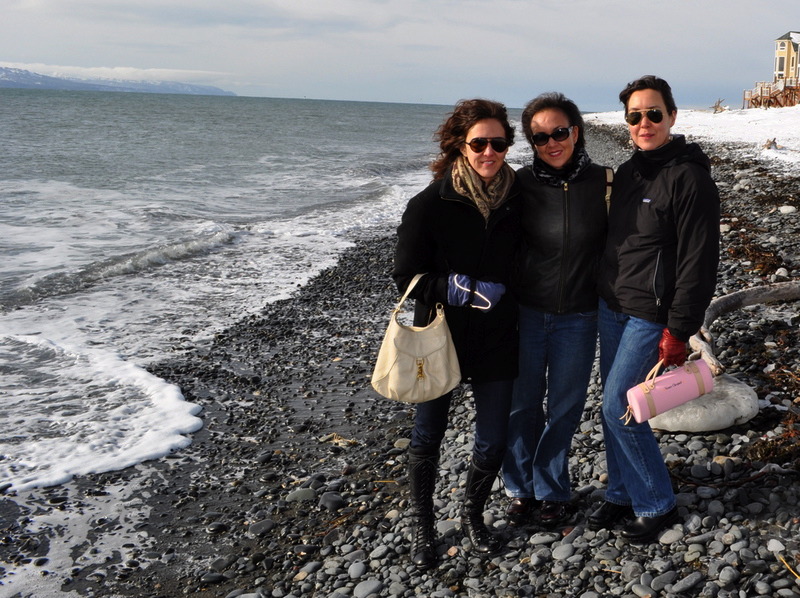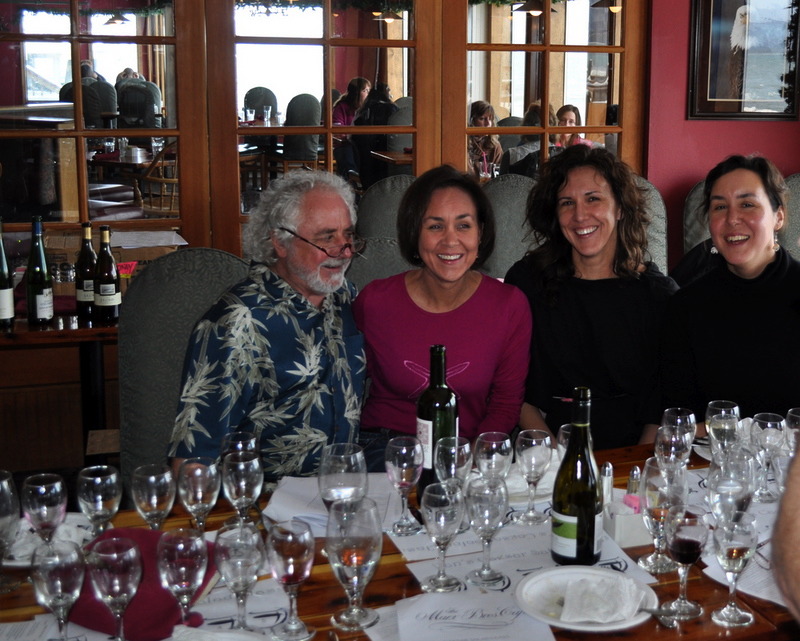One of my great joys is getting to taste, and try, and drink unusual, rare, or wonderful things.
I took a wine class a few years ago with my two sisters, and the older man sitting across from us asked, “so, why are you all here taking this class?” One of my sisters responded, “oh! I love drinking wine.”
He smiled and turned to hear my response and I said, “I’m an existentialist.”
My sister laughed and told him, “she really is! She’s a philosopher for a living!”
That is, investment in the experience of things is fundamental. From this perspective, I am fascinated by unusual, rare, and wonderful things.
With this in mind, today’s post looks to just such a grape variety–a grape uncommonly grown, with a contested history, and surprising mix of characteristics. I believe that when confronted with such varieties the appreciation for its peculiar position in the world adds layers to the experience of its flavor, bouquet, texture, and color.
To properly appreciate the two varietal wine reviews that follow, we begin first with a sort of wine story.
Here it is:
A Grape’s Story Titled:
What the Hell is This Grape Anyway?
aka., The Grape of Great Mystery!
aka., OH MY GOD IT IS CHARBONO! what? BONARDA! what? OH JUST READ THIS COMIC WHY DON’T YOU? (not that the comic will settle ALL of the mystery)
click on comic to enlarge
So, it turns out not everyone agrees that Bonarda is actually Charbono, or, rather Corbeau (there is ANOTHER grape variety also called “Charbono” that originates NOT in France, but in Italy, and is definitely not Corbeau, as if we needed more complications). But, the evidence we have so far seems to best support the idea that Charbono of California IS the same grape variety as Bonarda from Argentina. Interestingly, however, Carole Meredith, who performed the genetic testing that linked California charbono to corbeau believes that what is called bonarda in Argentina is not actually one cohesive grape variety, and thus that only some of Argentina’s bonarda is the same varietal as charbono. Such a claim is of course theoretically possible considering how commonly plantings around the world have been mislabeled, and then their accurate history forgotten. Both California charbono, and Argentinian bonarda have gone through re-namings before.
More conclusive testing will have to be done to know for certain, and even then I’m sure disagreement will continue. (c.f. The common determination that Shiraz originates from Persia, even with genetic testing telling us it comes originally from France. That is, genetic testing is not always enough to convince everyone, and for god sake, maybe sometimes it shouldn’t be.)
To answer any questions about why the grape no longer shows any significance in France, its apparent place of origin–corbeau was brought from the Alps region of Sovoie to the Calistoga region of California in the 1880’s. But, shortly after that the phylloxera outbreak hit Europe, and the grape was essentially wiped out. Prior to the outbreak the variety traveled to South America as well.
ANYWAY, the point of all this is that the history of Charbono-Bonarda reads much like a historical fiction novel focused on ideas of self-discovery where the protagonist suffers a memory loss in early adolescence due to having been separated from his or her parents in the midst of a significant traumatic event, and ended up being taken up by unrelated care takers that then journeyed the protagonist to various far reaches of the world. In other words, dramatic, and very exciting, with hints of war, starvation, and the threat of possible annihilation.
Okay, with all that absurdity in mind, let’s turn to the wine reviews.
Robert Foley 2009 Charbono
The Robert Foley Charbono shows incredibly ripe color–an inky purple reaching out to ruby edges. The wine can’t be seen through. It also shows good strong viscosity with legs dancing over the side of the glass in faint color.
The charbono is full of bright red fruit showing faint hints of smoke, and touches of smoked meat as well. The mouth is dominated by cranberry, and a mix of both tart, and black cherry, with a little pomegranate. The remarkable thing about this wine though is how incredibly bright the tang shows while the tannins remain soft-medium in comparison. The acids here clearly win. It’s unusual to have such a bright red fruit wine with dominating acids. Here they keep the fruit tasting fresh, and your mouth watering, thus avoiding any worries of disparaging remarks like “fruit bomb.” The oak influence on this Robert Foley is very light. It adds a layer of richness, without being imposing–this charbono doesn’t seem to want much oak.
I’m curious to taste a vertical of this wine at some point. I’d like to see how the flavors change from vintage to vintage, and also how this wine develops with age.
Colonia las Liebres 2009 Bonarda, from Altos las Hormigas
Again we find a very ripe wine with inky purple reaching out to ruby rim, and medium high viscosity–the dancers legs showing hints of color.
The nose of this Bonarda from Altos las Hormigas’s Colonia las Liebres project offers a lot of red fruit, with touches of black fruit, and light scents of leather. There are even whispers of red clay earth (though this hint of earth fades as the wine rests in glass). The mouth though shows only very light touches of leather in comparison, with the wonderfully fresh, young red fruit tang dominating. In the bonarda we get cranberry again, but with a stronger sense of other berries as well–raspberry, and some blackberry too.
Like the Robert Foley, the acidity is remarkably high, but with the red fruit (with some hints of black fruit) flavors proves pleasing, keeping your mouth clear, and watering with a bright tang.
The Colonia las Liebres is made completely unoaked, so the fruit remains very fresh, and even fleshy.
The 2010 vintage has recently been released–I look forward to trying it!
***
Side by Side–Which One Wins?
Getting to taste these two wines side by side I can’t imagine believing anything except that they are of the same grape variety. The quality on both these wines is good. I recommend either for sheer drinking interest combined with pleasure.
They’re unusual wines, as I’ve said–it isn’t common to find a red with such high acidity, while the tannins remain moderate and smooth. Let me be clear–on whites high acid levels are often described as ‘enamel stripping.’ You get none of that effect here. Your mouth stays clear, bright, and watering from these acids, but they are not so stark to be unpleasant. The red fruit flavors keep you from suffering in that sense. Still, with these structural combinations some people won’t be interested. If what you want is a more tannin driven red, you won’t find it here. The tannins in charbono or bonarda are clearly subservient to the acidity.
The truth is both of these wines are well worth buying. However, if put side by side I’d have to point out the unbelievable value on the Bonarda. The quality of these two is comparable but the price on the bonarda ranges from under $10 to $13 USD. Let me just say, what?! Again, the Robert Foley is also recommended here. If you want a little more layering to the flavors from the light oak influence on the wine, it is the choice between the two. But, it prices out between $30 and $35 USD, which at times can be harder to pull out of your pocket.
I recommend opening one of these bottles to first taste on its own for the experience of it, and then getting someone else to enjoy it with you, and finally pairing it with food. The acidity here means this is going to be a very food friendly wine.
Which ever you choose– Enjoy!
***
p.s. For those of you wishing for this post to come back around to the damned wine class with my sisters I attended several years ago, here’s more of the story.
Whoever designed a wine class to be combined with a cooking class, and the wine to consist of at least five full glasses paired with a meal, with “the meal” consisting ENTIRELY of salad (and only leaves, since it was only Caesar Salad)–well, such a person was clearly (a) tricky, (b) a touch conniving, and (c) a heterosexual man expecting the class to draw in women. Or, in this case actually two heterosexual men, both of whom knew 4/5 of the participants that signed up were women.
The quick version here is that no matter how many croutons we tried to put in that damned salad bowl to help the situation, we all ended up drunk anyway. Somehow our accidental drunkenness supported a sort of bonding experience for us though, and only partially because we were forced to just sit in place until our cross-eyed state cleared up as we washed it away with water. To put it another way, after an experience like that EVERYONE was either an existentialist, or praying.
Here’s two pics for all of you.
Three sisters
Three sisters ONLY PART WAY THROUGH the wine-salad conundrum
(The man in the pic is the designer of the wine-salad class. You can SEE he’s tricky, can’t you? He’s also a dear-hearted, hilarious man, and an excellent chef at a fantastic restaurant. All around a good deal.)
(By the way, anyone that wants to hassle me about my hair in these pics, let me just say-we are in ALASKA for god’s sake, where the outside is too gorgeous, and the air too windy for me to frickin’ worry about that awful 80’s side puff going on here. aka., leave me alone about it. kiss! kiss! Amen.)
(one final pic to prove the gorgeous part of the gorgeous plus windy claim.)
The view just outside the classroom
Cheers!
Copyright 2011 all rights reserved. When sharing or forwarding, please attribute to WakawakaWineReviews.com








[…] Copyright 2011 all rights reserved. When sharing or forwarding, please attribute to WakawakaWineReviews.com Share this:TwitterFacebookStumbleUponRedditLike this:LikeBe the first to like this post. ‹ Older Post The Charbono-Bonarda Connection with a Bit of Mucking Around, plus a Charbono, a… […]
[…] Copyright 2011 all rights reserved. When sharing or forwarding, please attribute to WakawakaWineReviews.com Share this:TwitterFacebookStumbleUponRedditLike this:LikeOne blogger likes this post. ‹ Older Post The Charbono-Bonarda Connection with a Bit of Mucking Around, plus a Charbono, a… […]
[…] Mendoza is home to Argentina’s most-widely planted grape, Malbec, and also to Bonarda, which used to be the one most-widely planted. Malbec enjoys all the fame, while Bonarda is the “workhorse”. The latter better befits the “People’s Pope”, no? Bonarda is also called Corbeau in Argentina (and France), and elsewhere is called Charbono and Douce Noir. It is not either of the grapes known as “Bonarda” in Italy. Confused? Try this explanation. […]